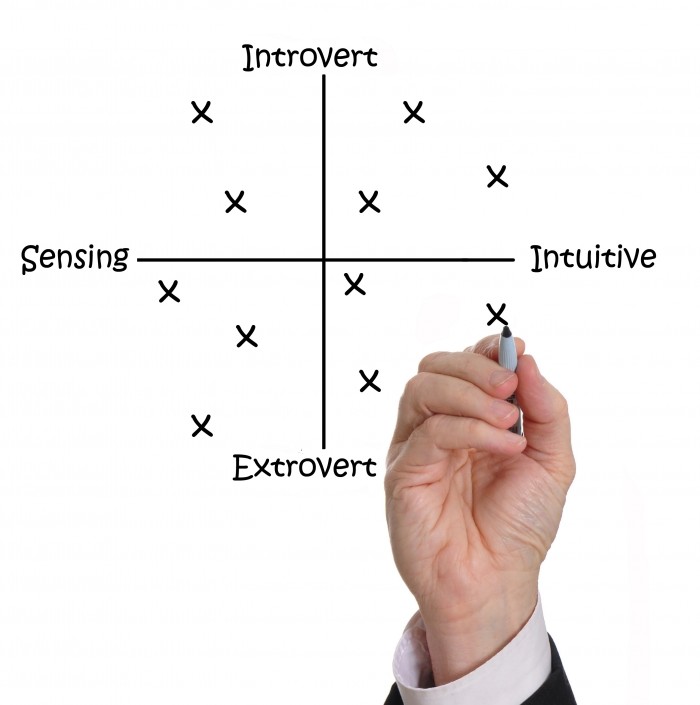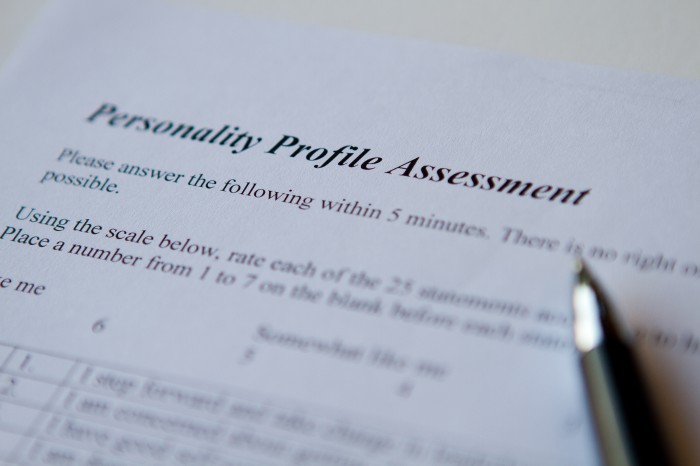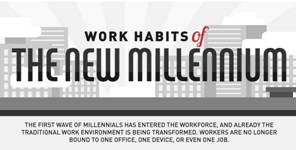 People are different, and that’s a good thing. However, because we all convey and gather information in different ways, sometimes the lines of communication break down. It’s a big challenge in today’s workplace, where remote workers and virtual teams are becoming the norm. What can managers do to create functional – and harmonious – teams, and how do personality traits fit in? Let’s take a look at how team leaders can use the characteristics of their employees to their advantage, and find out what it takes to fit together an efficient team – or help improve one that’s struggling.
People are different, and that’s a good thing. However, because we all convey and gather information in different ways, sometimes the lines of communication break down. It’s a big challenge in today’s workplace, where remote workers and virtual teams are becoming the norm. What can managers do to create functional – and harmonious – teams, and how do personality traits fit in? Let’s take a look at how team leaders can use the characteristics of their employees to their advantage, and find out what it takes to fit together an efficient team – or help improve one that’s struggling.
Cults of Personalities
According to consulting firm Bersin by Deloitte, use of personality tests during the hiring process is on the rise. In fact, 60% to 70% of prospective workers in the U.S. are now being tested, up from 30% to 40% approximately five years ago. There are thousands of personality and screening tests in the marketplace today, and for many organizations, they’re a useful way to automate the hiring process.
In the world of personality tests, the Myers-Briggs Type Indicator (MBTI) has traditionally reigned supreme. Developed by Katharine Cook Briggs and Isabel Briggs Myers and based on Carl Jung’s pioneering work in psychology, it groups people into four principal psychological types based on how they see and interact with the world, absorb information, and make decisions. These differences are at the root of, and responsible for, many aspects of characteristics of human interaction, cooperation, and disagreement.
 According to the theory, there are four divisions or dichotomies of human personality, called preferences. Each test respondent is assigned a score for these preferences based on their answers to the test. They divide people according to the following divisions:
According to the theory, there are four divisions or dichotomies of human personality, called preferences. Each test respondent is assigned a score for these preferences based on their answers to the test. They divide people according to the following divisions:
- Extraversion vs. introversion
- Sensing vs. intuition
- Thinking vs. feeling
- Judging vs. perception
Though there are many forms of it today, the test to determine someone’s MBTI personality type usually takes the form of a series of questions with two possible answers. Based on the answers to these questions, personality preferences, and therefore type, can be determined. Here’s how that plays out.
Extraversion vs. Introversion
This dichotomy refers to how people regain their energy, that is, that which makes them motivated and activated. Extraverted people are energized by interactions with other people and activities. They like variety, prefer face-to-face interactions, and learn tasks by repetitive actions – by actually performing the tasks.
Introverted people, on the other hand, energize themselves during alone time. They are reflective and not impulsive, and tend to prefer to focus on one thing at a time. They might avoid face-to-face interaction and prefer communicating through the written word, and they’re generally able to learn new tasks by reading instructions carefully.
Sensing vs Intuition
The sensing vs intuition scale describes how people take in and process information. People who skew towards the sensing side of the scale are observant and focused on the here-and-now. They are precise and deliberate when speaking, and appreciate those traits in other people. They are slow to draw conclusions, preferring to collect facts.
On the other hand, those lean towards intuition might be characterized as impulsive or decisive, depending on how the action in question turned out. They are quick to draw connections and meanings, and are very future-oriented. They are comfortable with change and quite flexible and adaptable.
Thinking vs. Feeling
The thinking vs feeling dichotomy describes how people make decisions. Thinkers are rational, focused on logic, and task-oriented. They are concerned with being fair and may be somewhat stubborn. They rely on data and facts to make decisions.
People who are more on the feeling side seek harmony with others, and are extremely empathetic. They are people-oriented and often make decisions based on gut instincts. They prefer to see the positive qualities of everyone and tend toward acceptance and tolerance.
Judging vs. Perception
The judging vs perceiving dichotomy examines how people choose to live their lives. People who skew towards judging are plan- and schedule-oriented, have a hard time leaving things unfinished, and often very focused on their careers. They like to have structure in their lives.
People who tend toward perceiving often leave their schedules open, preferring to do things on the fly. They explore options before making a choice, and enjoy starting projects more than finishing them. They desire to mix work and play, and tend to be spontaneous.
Four-Letter Words
 After taking the test, you are assigned a four-letter code that describes your personality preferences. This identifier is used as shorthand for describing your unique characteristics – each letter identifies a certain preference. It’s easy to see how these dichotomies can have a huge impact on a person’s work performance and communication style. Awareness of the various different personality types can help managers and coworkers realize that one style does not fit all, and that tailoring your approach can help improve team performance.
After taking the test, you are assigned a four-letter code that describes your personality preferences. This identifier is used as shorthand for describing your unique characteristics – each letter identifies a certain preference. It’s easy to see how these dichotomies can have a huge impact on a person’s work performance and communication style. Awareness of the various different personality types can help managers and coworkers realize that one style does not fit all, and that tailoring your approach can help improve team performance.
Putting Personalities to Work
Knowing your own psychological type preferences can give you valuable insight into your weaknesses and strengths, and provide a starting point when relating to your coworkers. Understanding yourself is key to working better with other people. Are you a perception-focused person on a team of judging types? You might want to start scheduling more meetings instead of relying on random hallway conversations to get your work done. And if you’re a manager with an employee who skews toward judging, it might make sense to place her in a leadership role to keep a team on track.
Understanding the personality preferences of your employees can be the difference between a smoothly running, well-oiled machine of a team and a disorganized mess. One way to help manage this is to create a table with each team member’s personality type to help you identify advantages and work with potential problems due to those types. Simply classifying your employees as introverts or extroverts might help you spot issues. For example, an extravert might be less happy and productive working remotely, while an introvert might thrive in the same position.
Going Overboard

The nature of the test is to simplify preferences along a scale that is understandable to people, so it’s important to keep in mind that a personality test can never tell the whole story. Most of us fall somewhere in between the two extremes, and it’s important to keep this fact in mind. Because of its use of dichotomy, the test tends to paint a black-and-white picture of personality, a thing that, by its very nature, is fluid and hard to nail down. All insights provided by the test should be tempered with real-world understanding and observation.
It’s also important to keep in mind that the test can be inconsistent. There have been studies showing that up to 50% of people arrive at a different result the second time they take a test, sometimes as little as five weeks later. And that makes sense – many of us might see ourselves as logical one day, and impulsive the next. That’s why it’s important to use this test – and others like it – as a guide, not a set of rules.
That said, the MBTI personality test (and its many derivatives) can still be extremely useful for understanding and interacting with employees and coworkers. In helping to focus on root of the differences and similarities between people, it provides a practical tool for approaching any cooperative effort. In this way, employees with a good mix of complementary personality types can be assembled to create smoothly-functioning teams.
